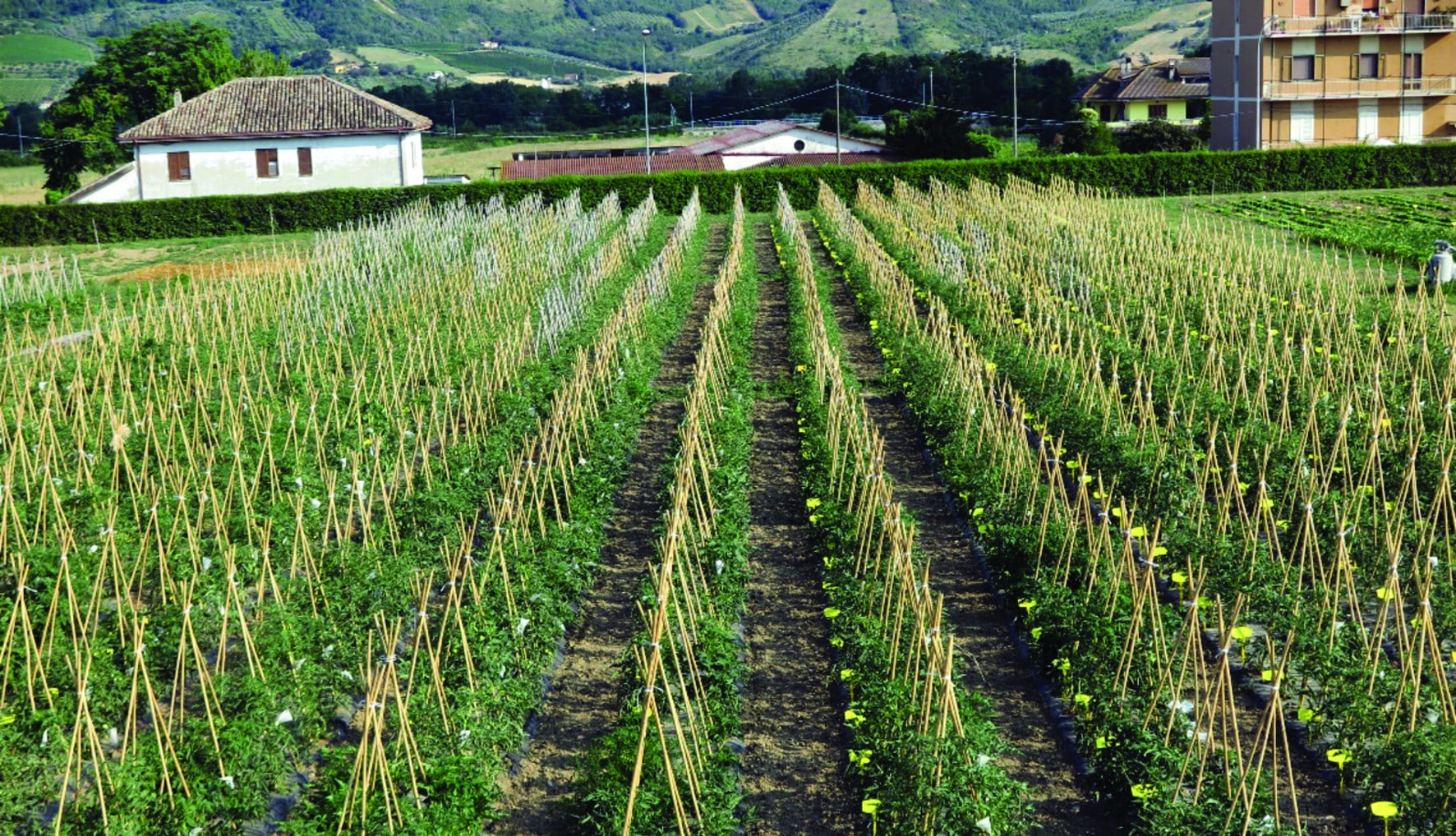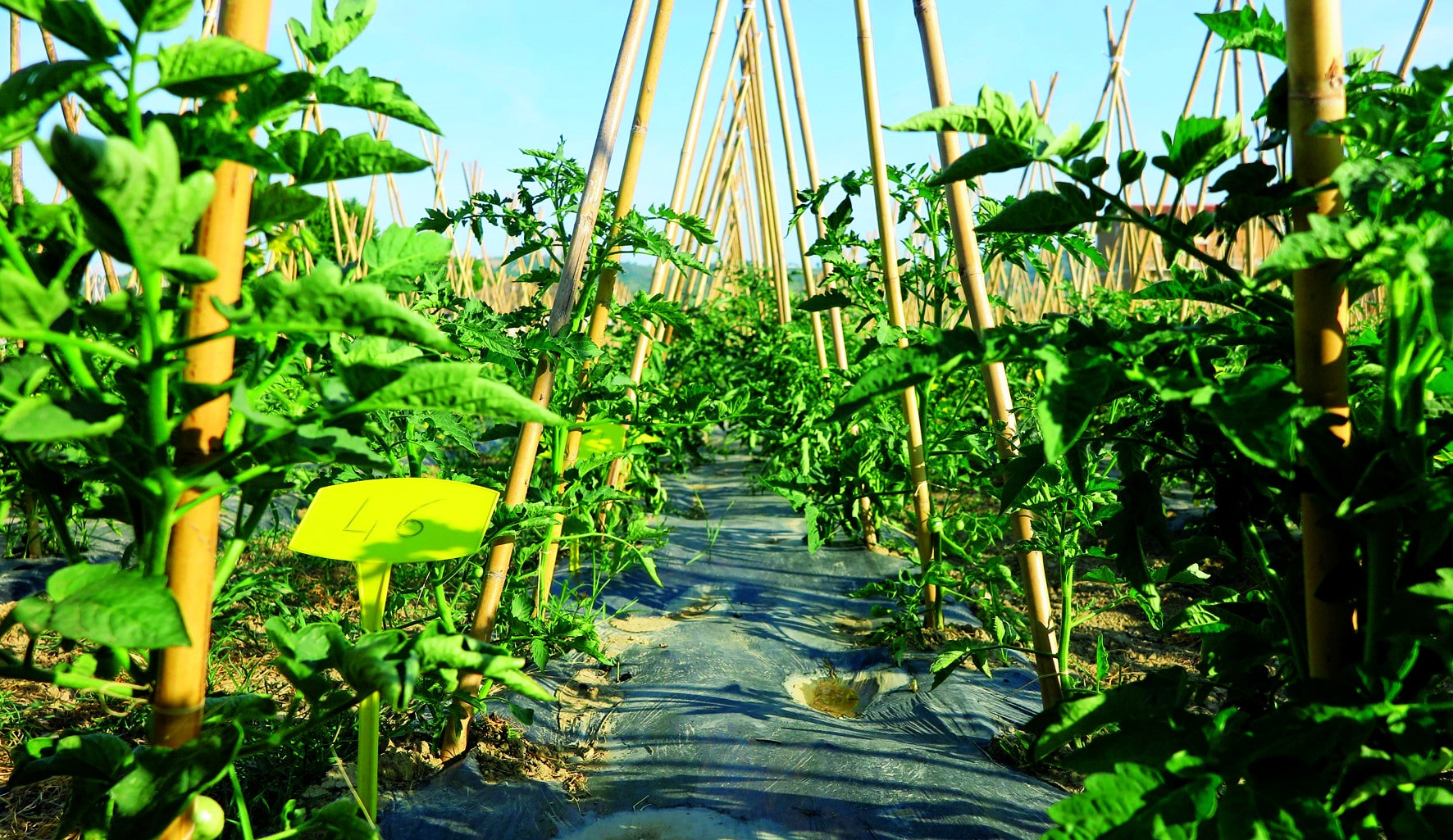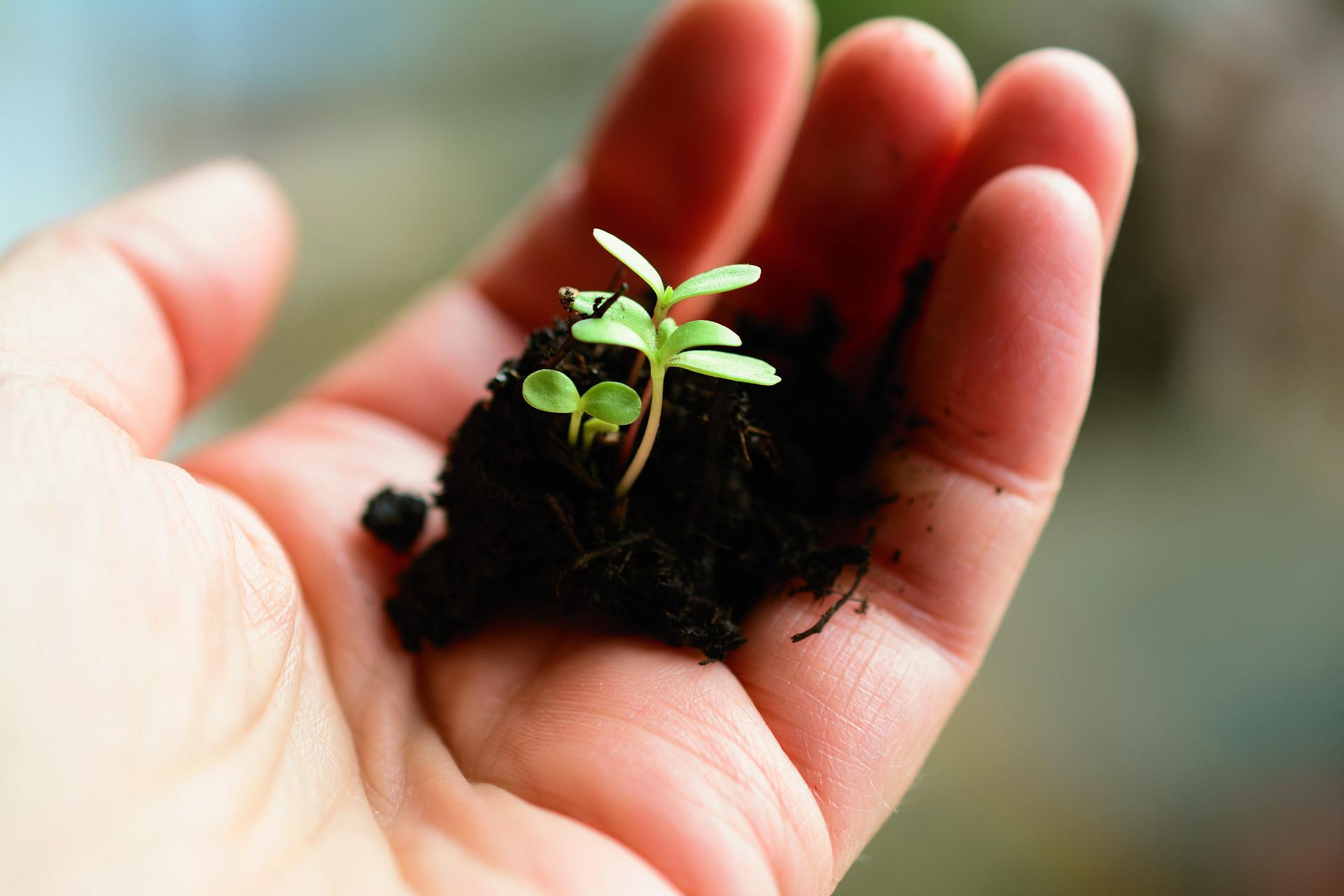All you wanted to know about organic agriculture in Europe
Some time ago, I moderated the Workshop on Potentialities and Challenges of Breeding for the Vegetable Organic Systems in Almeria, Spain. Organic agriculture is a fast-growing sector in Europe covering 13.4 million hectares of agricultural land in the EU-28 (2018). With a steady growth in demand and a recent update to the EU Regulation on Organic Production, it was time for European Seed to dive into this sector.
And rather than posing a few standard questions about organic breeding and organic agriculture I confronted the Workshop speakers with some deliberately thought-provoking statements which are often used by critics to undermine the organic sector. I wanted to allow the various presenters to provide their own answers to such criticism, so I spoke with Jaime Prohens, Director at the Institute for the Conservation and Improvement of Valencian Agro-diversity (COMAV) at the Polytechnic University of Valencia (UPV) in Spain, Teodoro Cardi, Director of the Research Centre for Vegetables and Ornamental Crops in Italy, and with César Gonzalez, Manager Public Affairs at Euroseeds in Brussels, Belgium.
ES: Would you agree that heterogeneous varieties are best suitable for those situations where the grower has little to no control over biotic or abiotic stresses?
“Yes, heterogeneous varieties and in general more genetically diverse agricultural systems provide stability in the production when conditions involve the presence of stresses, particularly when they are unpredictable,” says Prohens.
“Maybe yes, maybe not,” says Gonzalez. “Heterogeneity may entail agronomic benefits in cultivation under certain sub-optimal conditions. For instance, restrictions in the use of pesticides and fertilizers lead to lower potential yields, as it is the case in organic farming,” he adds. In this case, organic heterogeneous material can become a buffer against environmental hazards and loss of production.
In some other cases, heterogeneous material may also represent a higher plant health risk due to earlier breakthroughs of resistance or higher pest and disease pressure on the field (i.e. Phytophthora in potatoes). He shares that other disadvantages linked to the use of heterogeneous material in agriculture are different growth rates, crop cycles, maturity index, ripening season, etc.
Cardi says that it is probably true. “While heterogeneity is good for genes/alleles related to resistance/tolerance to stresses, it can be detrimental when it applies to harvesting time, fruit quality, etc, especially if you think to industrial processing” Cardi says.

ES: One could argue that a high level of uniformity makes a variety very suitable for organic farming because it would be easier to carry out mechanised weed control, lead to a reduced time for harvest & packaging and result in reduced CO2 emissions. What is your take on this?
“I think it would be good to separate and understand that organic and sustainable are not synonyms,” says Gonzalez, indicating that organic farming has brought conventional agriculture some very positive things to improve sustainability but the same should be true the other way around. “More uniformity and higher performance per hectare lead to less CO2 emissions (and other GHG) which, therefore, serves sustainability. Both organic and conventional farming have a duty to fulfil to achieve sustainability.”
While Cardi thinks that it is generally true, Prohens mentions that phenotypic uniformity does not mean genetic uniformity. “There are landraces and other improved materials that, despite displaying high levels of genetic diversity, are very uniform in their characteristics. Also, use of mixtures of crops, such as cereals with pulses, reduces the problems of weeds. Some heterogeneity does not necessarily mean increased difficulties in the management, harvesting or processing of the crops,” Prohens says.
ES: Is it fair to state that all breeding methods that do not lead to GMOs, can be applied in organic breeding?
“Yes, why not?” says Cardi. “It should be clarified, however, that GMO is a legal term, that includes different things. In my opinion, all not transgenic GMOs should be applied in organic breeding. Both conventional and new approaches of mutagenesis are very close and undistinguishable, in terms of processes and results, to natural mutagenesis,” he adds.
Prohens acknowledges there is some debate about this, in particular with methods that are not known to occur in nature, like the development of doubled haploids from anther or microspore culture. “However, the methods that are allowed will depend on the regulations applied on what is allowed or not in organic breeding and organic agriculture,” he says.
According to Gonzalez, organic growers and farmers currently have access to and benefit from high quality seed developed from a wide range of different breeding methods. He emphasizes that only few breeding programs are dedicated solely to the organic sector. “Given the rather small size of some specific organic markets specifically, such exclusive dedication is not economically sustainable. Varieties for organic production therefore commonly derive from the same breeding programmes as their non-organic counterparts,” Gonzalez says.
Exclusively organic breeding programmes are, based on the size of the sector, much smaller, thus more expensive, riskier (exposure of bred lines to diseases, pests, etc.) and consequently lengthier. “Such an approach is contrary to the urgent needs of growers – especially organic growers – to meet current and future agricultural challenges, such as climate change,” Gonzalez adds.
Euroseeds acknowledges that next to legislative rules and regulations, private definitions and standards may be developed and used as marketing tools by individual groups of economic operators in the organic market. “Euroseeds underlines that a restriction of breeding methods for organic variety development would have significant consequences for all organic farmers and growers,” says Gonzalez. “For many crops, there will be less diversity and choice. For some species, even no organic seed will be available anymore.”
It should be said that varieties developed for or specifically suitable for organic production generally are tested under respective organic growing conditions to verify that their performance meets the expectations of farmers and growers in practical production.
Prohens’ experience is that by digging in the germplasm and using appropriate breeding methods accepted in organic breeding, it is possible to obtain high yields under organic conditions, at least as high as that of varieties bred for conventional agriculture and used under organic conditions.
“In some cases, probably yes, but in most cases not,” says Cardi. He shares that the productivity gap is not always so important. “It becomes important when it has significant implications in terms of areas that must be used for agriculture or when it is not compensated by higher prices,” he adds.
ES: Do you think it would be good to allow new breeding techniques into organic plant breeding?
For Prohens, this would depend on the acceptance of the consumers and the organic growers’ community. “From the technical point of view, they would provide advantages, but my feeling is that organic consumers and associations would not accept them, as it goes against the organic production philosophy.”
According to Cardi these techniques should be allowed. Gonzalez also believes they should be allowed, provided that they would not be considered as regulated GMOs. “If this requirement is met, plant breeding innovations can make an enormous contribution to speed research and development of more tolerant/resistant varieties,” Cardi says. “This would be clearly beneficial for organic farming, where use of pesticides is much more limited.”
ES: Do heterogeneous plant varieties provide a risk to the farmer?
For Cardi it would depend on the crop, the trait and the market. “Some degree of heterogeneity can help increase crop resilience and farmers’ ability to combat plant stresses. It cannot be tolerated, however, when it influences too much the quality of the final products.”
Prohens indicates that it would be a risk of less uniformity in the product, which may be essential for certain markets or for processing in which very specific standards of characteristics are needed. “And of course, heterogeneous varieties although are known to provide a greater yield stability, on the long run may be less productive than élite homogeneous varieties,” he adds.

ES: In the EU (and in most other countries in the world) organic agriculture is allowed to use pesticides. Should this be entirely forbidden?
Biocontrol products are and should be allowed in organic farming says Gonzalez. “However, for synthetic pesticides, there is a ban in place and therefore, only in case of unacceptable impacts on the environment should be allowed. In line with the transparency commitments, maybe the question should be, should these derogations be publicly accessible and/or labelled?” he asks.
Prohens says pesticides should not be forbidden because there are natural pesticides compatible with organic agriculture that can help to manage the incidence of pests and diseases, ideally in combination with the use of natural enemies or antagonists.
“I think it is not possible to forbid pesticides in organic agriculture,” says Cardi. “It is important, however, even with pesticides approved for organic agriculture, to have data about toxicity on humans and animals.”
ES: Should testing for pesticide residues on organic products become mandatory in the EU?
“One of the main drivers for consumers to buy organic food is that they believe it is free from pesticides but making it mandatory to analyse all organic products could become very expensive,” says Prohens. “I think that they should have the same levels of controls than conventionally produced food and a traceability system to identify the producers and distribution actors. Accepting organic products with pesticide residues, even if authorized for organic cultivation, would be unacceptable in my view.”
Cardi says that he thinks it should be mandatory. “The quality of the final product should be anyhow assessed, independently of the methods used for cultivation.”
EFSA already conducts annual reports on pesticide residues in food (which include organic food, as well). “Compared to conventionally produced food, the maximum residue level exceedance and quantification rates are usually significantly lower in organic food. However, around 15% of the organic food samples contain quantifiable residues2” says Gonzalez.
ES: There is a shortage of organic seed. Is it fair to state the multiplication of untreated non-organic seed, would lead to organic seed?
“In my opinion yes,” says Cardi. “In any case, today I am afraid it is a necessity, that will last longer depending on the availability of reliable organic methods for plant breeding and seed production,” he adds.
Gonzalez mentions Euroseeds is of the opinion that the principle of organic production may still be preserved if organic seed is multiplied from untreated, non-organic basic seed. And that decisions on derogations shall solely be taken based on assessment of organic seed availability on EU level.
“Breeding companies have been able to provide enough high-quality seed for a growing demand of seed for organic farming,” Gonzalez says. “However, the type of plant reproductive material provided has changed over the years and this trend is expected to continue.”
According to Euroseeds own surveys, by type of plant reproductive material, it is expected that ‘seed propagated under certified organic conditions’ keeps growing, while ‘conventional untreated seed’ remains stable or decreases.
“Ideally organic seed should be produced under organic conditions, but more research should be made to be able to optimize under organic conditions, the production of pathogen-free high-quality seed,” says Prohens. “I think that generally this is feasible, but abusive use of exemptions has delayed the production of seed under organic conditions.”
2: https://efsa.onlinelibrary.wiley.com/doi/epdf/10.2903/j.efsa.2019.5743











